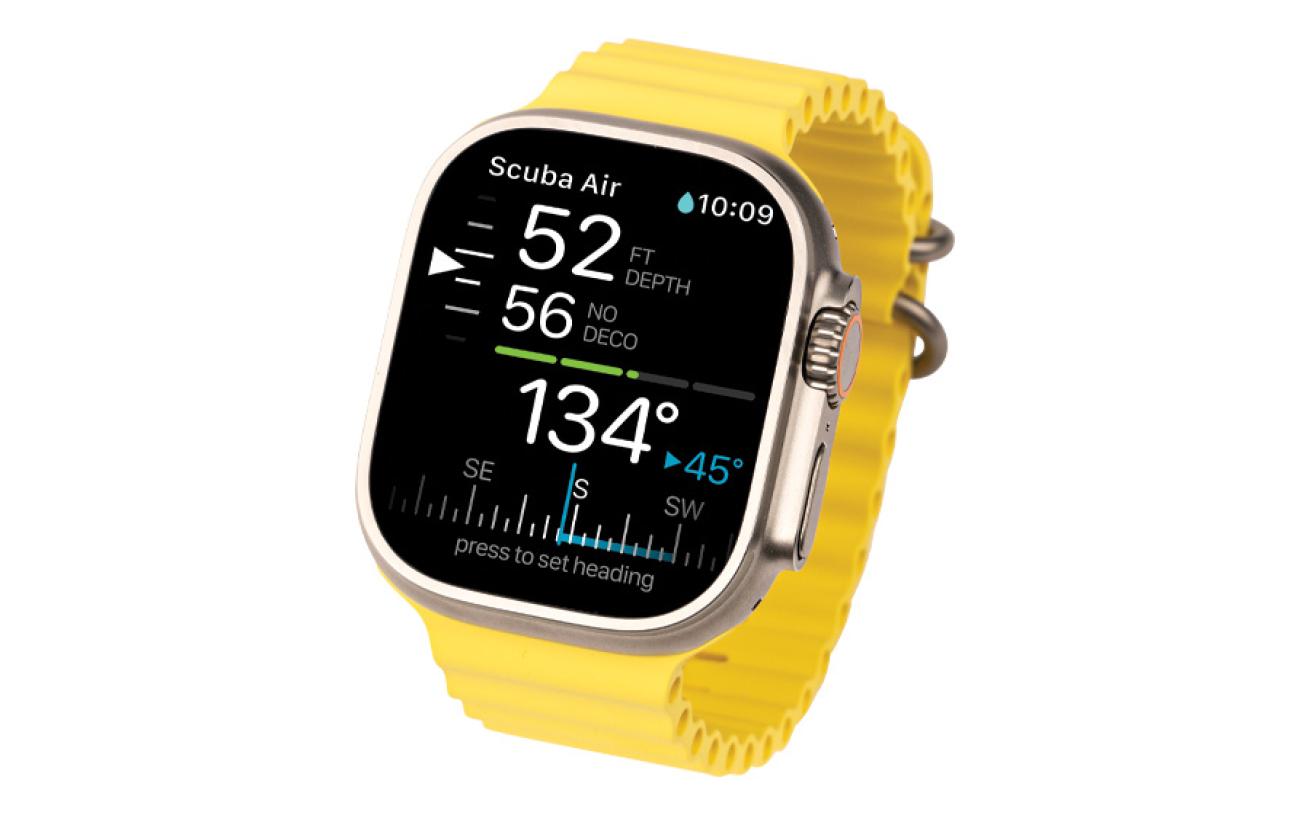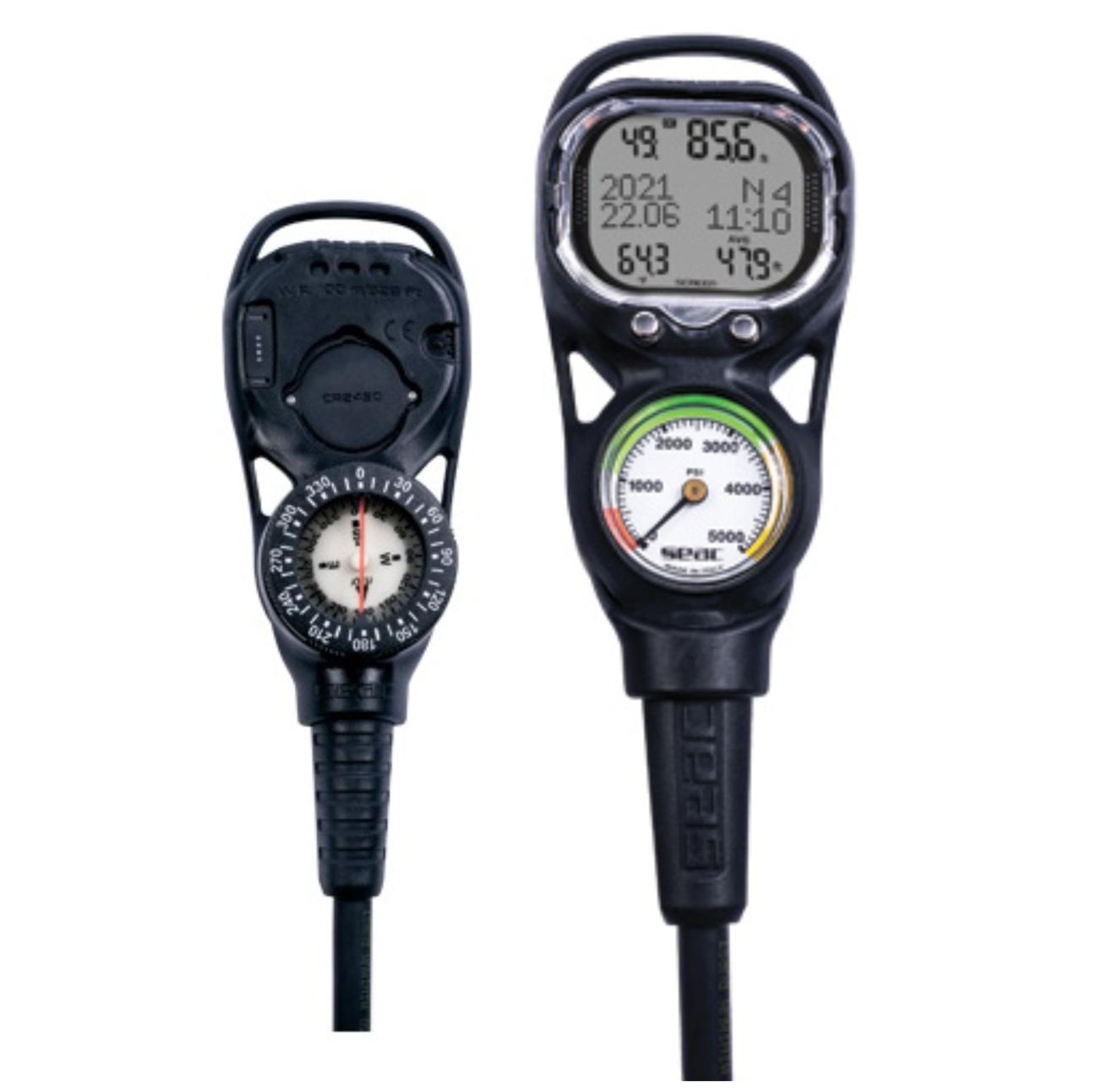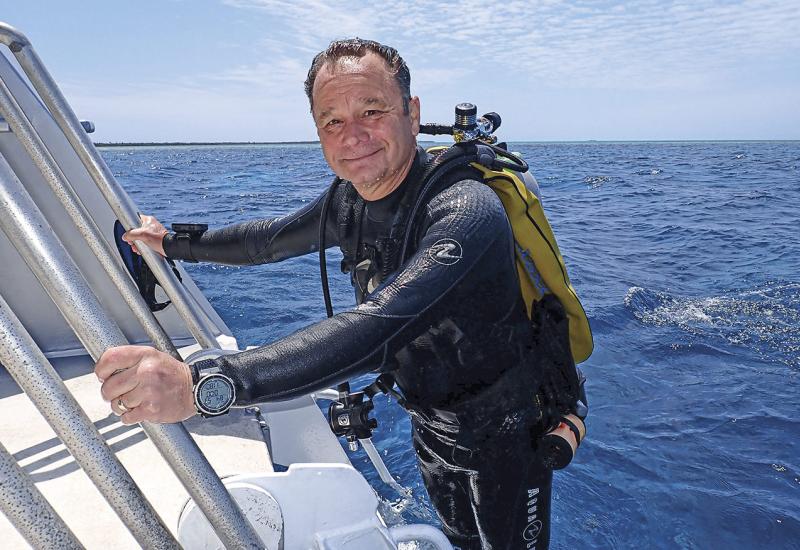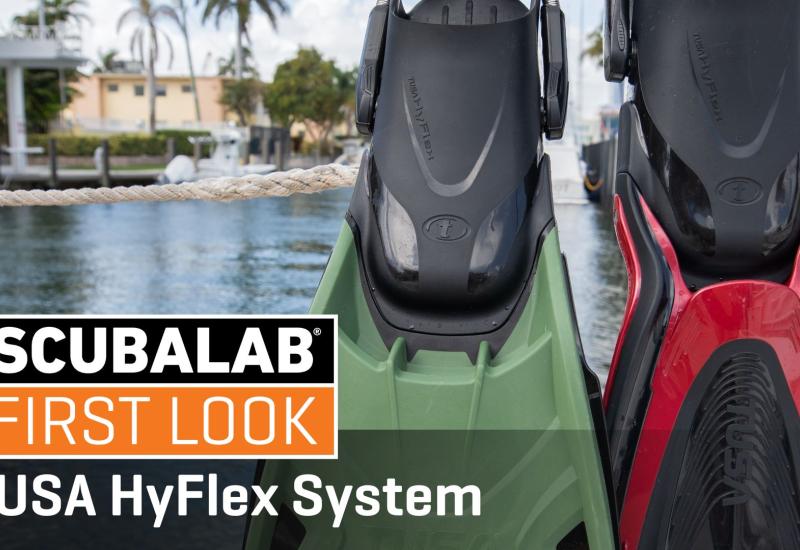The Best New Dive Computers of 2023 Reviewed

Candice LandauScubaLab director Robby Myers hands out dive computers to test divers
How We Test
Our test evaluated two aspects of a computer’s performance: how easy it is to operate and understand before, during and after a dive, and an objective measure of its decompression algorithm relative to other computers in the test.
Test-Dive Protocol
Test divers evaluated computers in nine performance categories. Test dives were conducted at Ramon’s Village Resort and SunBreeze Hotel in Ambergris Caye, Belize, and Blue Grotto Dive Resort in Williston, Florida. Equipped with underwater slates, divers scored computers in several performance categories. The scoring is as follows: 1 = poor, 2 = fair, 3 = good, 4 = very good and 5 = excellent. Test divers made written comments to record their observations while using each computer. After diving each computer, they were each asked to rank their favorite computers.
Test performance categories were:
Intuitiveness and ease of operation, including configuring settings
General ergonomics, such as size and shape, comfort and effectiveness of buttons, straps
Ease of reading screen at the surface, including in sun
Ease of reading screen underwater, including performance of backlight
Overall quality of dive data display, including selection, layout and presentation of data, with a focus on how clearly it presents critical dive information
Usefulness and ease of accessing alternate dive screen data
Safety-stop performance, including alerts and timer
Ease of accessing and usefulness of surface interval data, including no-fly time
Onboard log data, including ease of access
Related Reading: This is the Best Dive Gear for 2023
Objective Test Protocol
To gauge the relative conservatism or liberalism of the computers’ algorithms, they were set to their most liberal settings and subjected together to a series of four dive simulations in the University of Southern California Catalina Hyperbaric Chamber. Meant to simulate a day of diving, the multistage profiles were: 100 feet/55 minutes; a one-hour surface interval; 70 feet/45 minutes; a two-hour surface interval; 80 feet/45 minutes; a one-hour surface interval; and 60 feet/40 minutes.
View the full chamber-test NDL readings for each computer here.
Oceanic+

Monica MedinaMSRP $799.95 (Apple Watch Ultra); free, with premium app subscription starting at $9.99/month (Oceanic+ app)
CONTACT oceanicworldwide.com
Download: Bluetooth
Battery: Sealed rechargeable
Modes: 3; scuba, snorkeling(gauge), apnea
Gases: 1; 21–40% O2; nonair-integrated
Algorithm: In our chamber dives, NDLs seemed middle of the road when compared to the Scubapro G2 with both computers set to a 70/85 gradient factor.
Firmware Version: 1.1.4 (12)
"Proves that large screen size is not necessary to have lots of data."
The Oceanic+ app turns the Apple Watch Ultra into a fully functional dive computer. Testers loved the crisp color display, which scored excellent for readability in glaring topside conditions and at depth. The neatly labeled dive display uses bold rounded characters.
Depth and NDL are always in plain sight. Rotating the Digital Crown—a stand-out feature in its own right—quickly cycles through secondary data on the lower half of the display. This lets the computer pack in data, including a digital compass, without ever feeling cluttered or overwhelming. Some testers really liked the altimeter-style ascent/descent graphic, but others found it a little cryptic.
The computer is very intuitive and user-friendly, even for divers who aren’t Apple users. The app can be used for free on gauge mode, but a paid subscription is required to access no-decompression information. Users who are already entrenched in the Apple ecosystem may appreciate the flexibility the subscription model provides—especially new or infrequent divers.
Regardless of how one may feel about Apple products and subscriptions, one thing is clear: The Oceanic+ app offers a simple-to-operate dive computer with a slick-looking display and barely-there ergonomics that made it a favorite among test divers. It is our Testers Choice for recreational dive computers.
Genesis
Graviton

Monica MedinaMSRP $690
CONTACT genesisscuba.com
Download: Smartphone wireless sync
Battery: Sealed rechargeable
Modes: 4; Air, nitrox, gauge, apnea
Gases: 1; 21–99% O2; non-air integrated
Algorithm: During our chamber dives, NDLs were slightly more conservative than the average
Firmware Version: GE5068
"Great for someone who likes a simple, straightforward computer."
Testers really liked this computer’s easy-toread color display, user-friendly interface, logical menus and intuitive operation. Multiple testers described it as “easy to navigate.” The screen scored excellent for ease of reading in bright sun and at depth. Presented in clearly labeled boxes with bold, colorful characters, dive data is very easy to scan and comprehend at a glance.
Users can cycle secondary data with the press of a button or flick of the wrist thanks to a special “twist to next” feature. The compass is a nice touch, but we would’ve liked it even more if it could be used to set a heading. Alerts are accompanied by colorful prompts, chimes and haptics. Using GPS, the computer can auto add site names to dive logs when it recognizes famous dive sites and user defined sites.
Testers loved the computer’s “cool look and feel” and watch-like ergos. Its high-end features will appeal to divers of all experience levels who are interested in a smartwatch aesthetic without the price point. Picked as a favorite of several testers and offering very good performance across the board, the Graviton is our Best Buy for recreational dive computers.
Oceanic
Geo Air

Monica MedinaMSRP $549.94, $799.95 (with transmitter)
CONTACT oceanicworldwide.com
Download: Bluetooth
Battery: User-replacable CR2430
Modes: 3; dive, gauge, apnea
Gases: 3; 213; 21–100% O2; air-integrated
Algorithm: NDLs during our chamber dives were more liberal using the DSAT algorithm and moderately conservative when using Z+
Firmware Version: Rev 16
"Display is basic, but super clear presentation of the essentials."
This air-integrated Geo uses an old-school black-and-white LCD display with a useractivated backlight that offers very good readability in all conditions. The display is segmented, with large, easy-to-read characters. Alternate data is sparse, but includes max depth, time of day, temperature and gas mix info. Alarms use visual and audio alerts, but not haptics.
Safety stop information is clearly displayed and counts down to the second. It doesn’t, however, alert the diver at the start or the end of the stop. The four-button operation has a few idiosyncrasies—users must hold the mode button to switch from watch mode to dive mode—but is easy to operate otherwise.
The compact body and textured, silky silicone strap are comfortable to wear on bare wrists and over exposure gear—a drysuit strap is included. This simple computer provides overall good performance for the average recreational diver. Outfitted with air-integration, it also offers an economical option for divers who don’t want to pay for more advanced features but are nonetheless interested in multitank diving and wireless tank transmitters.
Seac
Screen Consloe + Compass

Monica MedinaMSRP $449
CONTACT seacsub.com
Download: USB cable
Battery: User-replaceable CR2450
Modes: 3; dive, gauge, apnea
Gases: 2; 21–99% O2; integrated SPG
Algorithm: During our chamber dives, NDLs were more conservative
Firmware Version: 10.16
"Very basic, but simple and easy to see."
The screen features a large display with equally large characters. Data in the center row uses a dot matrix display for enhanced clarity and detail of decompression information. Users can adjust the backlight and screen contrast for even better legibility. Testers scored it very good for ease of reading underwater and excellent at the surface.
The dive display is sparse but provides at-a-glance reading of essential data. An analog compass on the back of the console boot adds additional functionality. The two-button operation is simple and straightforward once you’ve gotten the hang of exiting to the main menu after each setting adjustment.
Scoring good for ergonomics, the thin, lightweight body sits comfortably in the hand during operation. It features several attachment points for easy mounting, and is very streamlined and low-profile. However, it should be noted that the nearly 3-inchwide body may not easily pass through some gauge pockets. Overall, this lightweight computer is a super easy-to-read instrument that is a solid option for any diver looking for a simple, straightforward console computer.
Related Reading: Newly Released Eco-Conscious Scuba Gear
Garmin
Descent G1

Monica MedinaMSRP $549.99, $649.99 (solar)
CONTACT garmin.com
Download: Bluetooth
Battery: Sealed rechargeable
Modes: 4; Open-circuit, CCR, gauge, apnea
Gases: 12; 5–100% O2; 0–95% He; nonair-integrated
Algorithm: In our chamber dives, NDLs were very liberal
Firmware Version: 11.21 (14630ec)
"Lots of buttons, but really easy to navigate."
Offering lightweight comfort and a compact body, the G1 took top score for ergos. It is stuffed with features including GPS navigation, fitness tracking and smartwatch functionality—there’s even a version with solar charging. However, there is no air integration. The small black-and-white display has an adjustable backlight.
It scored very good for ease of reading topside and good underwater. The dive display is very well organized with plenty of useful data, but characters are quite small, especially compared to others in this category.
A “Big Numbers Mode” can be used to enlarge them. Even with a host of dive and nondive functions, and five buttons, the G1 is easy to operate with little familiarity. It took top score for intuitive operation. In dive mode, users can double-tap the screen to cycle secondary data in lieu of the small buttons.
Though stripped down in comparison to other entrants in this category, the G1 still offers a full suite of advance dive modes, great ergonomics and a very user-friendly operation. A favorite among our test divers, the Descent G1 is our Testers Choice for technical dive computers.
Scubapro
G2 Tek

Monica MedinaMSRP $1,026
CONTACT scubapro.com
Download: Bluetooth
Battery: Sealed rechargeable
Modes: 5; Open-circuit, CCR, sidemount, gauge, apnea
Gases: 8; 18–100% O2; 0–82% He; air- integrated
Algorithm: In our chamber dives, NDLs were very conservative
Firmware Version: 1.1
"Dive display is very well organized for optimal viewing."
Although very similar to the original G2, this “tec” version opts for a pure gradient-factor algorithm instead of the personalized predictive multigas algorithm of its predecessor. It scored very good almost across the board. The large color screen stands out very clearly at depth, and users have several options for how data is presented.
One option shows only the essentials, with giant easy-to-read characters, while another provides a wall of data, including a dive profile graphic. Secondary data without a dedicated compartment is limited to a single field and must be stepped through one at a time. The G2 has a compass and the ability to view user-uploaded images.
Alarms use attention-grabbing graphics, but not haptics. The three-button navigation is very ergonomic, and menu organization is very intuitive. Menu prompts further aid the user, but only display functions that can be accessed by pressing, not holding, the buttons. The device hugs the wrist nicely, making it feel lighter than it looks.
Despite this versatile computer’s technical chops, it is very approachable thanks to a streamlined interface that hides advanced features until activated by the user.
Shearwater
Perdix 2

Monica MedinaMSRP $1,420 to $1,470, $510 (Swift transmitter)
CONTACT shearwater.com
Download: Bluetooth
Battery: User-accessible AA
Modes: 4; OC air/nitrox/three-gas nirox, OC technical, CCR, gauge
Gases: 5; 0-99% O2; 0-99% He; air-integrated
Algorithm: With Buhlmann GF ZHL-16C NDLs were more liberal. Using DCIEM (available by contacting a Shearwater dealer), NDLs were very conservative
Firmware Version: V95/BT11
"I didn’t think the Perdix could get any better, but it’s definitely better with haptics."
This update to the Perdix has added haptics and enhanced protections for the LCD display. What hasn’t changed is the computer’s intuitive, user-friendly operation and highly visible display. The dive display is logically organized into different compartments: static panes for basic dive and decompression info, and a scrollable compartment along the bottom for secondary data—including the compass.
The bright, colorful screen with large, easy-toread characters is, in the words of one test diver, “crisp and clear.” It scored excellent for visibility at depth and very good at the surface. Two adjustable, touch-sensitive buttons and clear on-screen prompts make for very simple operation and navigation. However, some testers didn’t like how they needed to step through each menu to change settings or check alternate data.
The computer is streamlined and low profile. It scored very good for ergonomics. Offering solid performance overall, it’s easily accessible to novice divers yet has the technical chops to cater to advanced. The Perdix 2 was a favorite of several test divers.
Shearwater
Petrel 3

Monica MedinaMSRP $1,650 (standalone), $1,950 (Fischer), $510 (Swift transmitter)
CONTACT shearwater.com
Download: Bluetooth
Battery: User-accessible AA
Modes: 4; OC air/nitrox/three-gas nitrox, OC technical, CCR, gauge
Gases: 5; 0–99% O2; 0–99% He; air-integrated
Algorithm: In our chamber dives, NDLs were very liberal
Firmware Version: V97/BT11
"Fabulous display, highly readable, super easy to access tons of info."
“Basically, a boxier Perdix,” is how one tester jokingly described the Petrel 3. Its screen is slightly larger and uses an AMOLED display. This allows for slightly bigger characters and much richer colors, which produces more contrast for even better visibility. It scored very good for ease of reading above and below the water. It also has updated touch-sensitive controls, toughened glass and bezel, and haptic feedback.
Navigation, settings and menus appear to be identical to the Perdix. The only real difference we found was that the Petrel has one less color option to select when customizing the display. The computer scored very good overall, with one exception. Noticeably beefier than the Perdix, the Petrel is heavier and bulkier on the wrist, and scored good for ergonomics.
With similarly great visibility and ease of operation, the Petrel was just as popular among test divers as the Perdix. However, it does have a slight advantage for technical diving: The computer has a 950-foot depth rating (100 feet more than the Perdix) and can be purchased with an integrated Fischer connection for closed-circuit rebreather diving.
Keeping Up With the Joneses
As with smartphones, dive computer software updates allow manufacturers to continue to make improvements over time. These changes can range from minor tweaks— like adding a language option—to major—such as adding new functionality or updating critical safety features. Each review lists the firmware version that was available at the start of our testing, however many models had one or more updates over the course of our test.
For example, the “Big Number” display mode available on the Descent G1 was patched into older Descent computers via an update. Oceanic+ added apnea mode and the ability to control the manufacturer’s new underwater iPhone housing (see page 34). Keeping your computer up to date will ensure you get the most out of your device.
Q: Do you have to be an advanced or technical diver to use a technical dive computer?
A: No! Our separation of computers into “Rec” and “Tec” categories for this review relates to the presence of advanced operating modes for disciplines like trimix and closed-circuit rebreather diving. The inclusion of these modes doesn’t limit open-water divers from using these computers as they still contain dive modes suitable for certified divers of all experience levels. If you’re interested in advancing your dive skill set, buying such a computer at the start will equip you with the tools you’ll need later on.

Kristin PaterakisPADI Club member Tyler Clapp evaluates the latest Shearwater and Garmin computers
ScubaLab Abroad
ScubaLab conducted the in-water ergonomics portion of this year’s computer test in Ambergris Caye, Belize, during a recent PADI Club trip. During the week, several club members volunteered their precious bottom time at this stunning underwater locale to put this year’s crop of computers through their paces. A big thanks to the ScubaLab test team: Claudio Brandileone, Jonathan Chan, Tyler Clapp, Mary Frances Emmons, Candice Landau, Kevin Ling, Dave Magness, Kenneth Minjire, Thamus Morgan, Kristin Paterakis, Roger Roy and Richard Wigelsworth.










